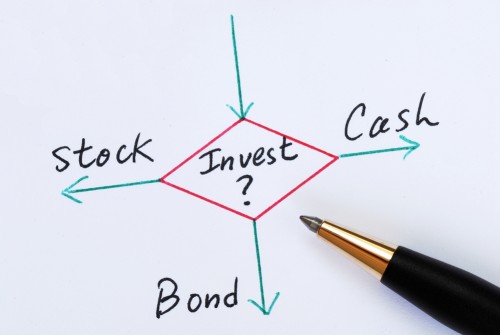Diversification is one of the most important attributes of a solid investment strategy. Many people dislike the Thrift Savings Plan (TSP) because they feel it doesn’t have enough diversification. This is an easy point to make, since TSP only has five investment funds, not counting the lifecycle funds, which are target-date funds (or fund of funds, to be exact).
However, this article serves to illustrate that TSP offers sufficient diversification for just about any portfolio (unless, of course, investing is your hobby and you’re constantly trying to find different places to put your money). That said, this article will only serve to provide a basic level of understanding to everyday investors and not an explanation of complicated investment theories.

What is Diversification?
Before we discuss TSP, it might be worthwhile to explain diversification itself and its role in reducing total risk. According to Investopedia, diversification attempts to “smooth out unsystematic risk events in a portfolio so that the positive performance of some investments will neutralize the negative performance of others.” So why is the term “unsystematic risk” emphasized? It’s important to know what role unsystematic risk (also known as diversifiable risk) plays in investing. Below are a couple more definitions:
- Unsystematic risk: Company-or industry-specific hazard that is inherent in each investment /a>
- Systematic risk: The risk inherent to the entire market or an entire market segment; also known as beta
- Total risk: Unsystematic risk + systematic risk
In other words, diversification only reduces the impact that one stock’s performance has on the market as a whole. It does not reduce the inherent risk that exists when you put your money in the overall market.
Let’s look at two examples:
Investor A has a $1,000 portfolio that consists of 10 stocks, each valued at $100. Investor B has a $1,000 portfolio, with 100 stocks, each valued at $10. A year later, let’s say that, in each portfolio, all the stocks went up by 10%, except for one company that went bankrupt, and the stock became bankrupt. That means that each Portfolio A winner is now $110, and each Portfolio B winner is now $11. Here’s how each portfolio would look:
- Portfolio A: 9 X (110) + 1 X (0) = $990
- Portfolio B: 99 X (11) + 1 X (0) = $1,089
You can see that Portfolio A’s bankrupt company caused the overall return to be -1%, while Portfolio B still managed an 8.9% gain. That is the power of diversification—one company’s bad performance is compensated by the good performance of more companies in the portfolio. However, if a terrorist event occurs or we enter a global recession and the overall market goes down, that overall effect (known as systematic risk) will generally happen regardless of how diversified your portfolio is.
What Constitutes Sufficient Diversification?
There is much research on the topic of diversification, specifically about how many different investments a portfolio should have before it’s sufficiently diversified. However, the impact of a single stock on a randomly selected portfolio goes down significantly after you reach 30 stocks and becomes statistically insignificant beyond 1000 stocks.
What are TSP’s Investments?
TSP funds come in 5 different funds: specifically G, F, C, S and I funds. Let’s look at how many securities are in each fund, according to their information sheets.
G Fund: G fund’s rate is calculated by the U.S. Treasury as the weighted average yield of approximately 125 U.S. government securities on the last day of the previous month.
F Fund: Index fund that tracks the Barclays Capital U.S. Aggregate Bond Index. As of TSP’s last report, this index had 9,079 different government, corporate and non-corporate bonds and asset-backed securities.
C Fund: Index fund that tracks the S&P 500 Index, which, by definition, contains securities from the 500 largest U.S. companies.
S Fund: Index fund that tracks the Dow Jones U.S. Completion Total Stock Market Index, which includes all of the actively traded U.S. stocks not in the S&P 500. As of TSP’s last report, this index contained 3,274 common stocks.
I Fund: Index fund that tracks the Morgan Stanley Capital International EAFE (Europe, Australasia, & Far East) Index. As of MSCI’s last report, this index tracked the stocks of 926 different companies located in 21 countries.
How Does TSP Meet the Broader Definition of Diversification?
If you count all the different investments, you get 13,904 different securities. Furthermore, these securities are diversified in terms of market capitalization (company size), industry, sector and type of investment (stocks versus bonds). There are a couple of shortfalls:
- No investments include Africa-owned companies, as the EAFE does not track markets in Africa. However, there are few, if any, African securities markets that are effectively regulated or provide liquid (easily marketable) investments.
- No investments in master-limited partnerships or non-traded securities. Again, being able to easily buy and sell investments at a price close to their value has an impact.
- No investments in options, commodities (such as precious metals or oil) or futures. These are highly speculative markets.
- No investments in speculative (a.k.a. junk) bonds. The F fund only tracks investment-grade bonds.
- No investments in preferred stocks.
- No investments in mortgage-backed securities, credit default swaps or collateralized debt obligations. If you don’t understand any of these terms, these are the investments that led to the mortgage crisis and the 2008 recession. Turns out most of the bankers didn’t understand them either.
All of these investments have one thing in common: If you’re an average investor, you probably shouldn’t be in them. In fact, most professional investors don’t make them, either.
You could argue that there are still some safe investments that are not available in TSP. However, you will probably find that staying in the TSP portfolio will provide enough investment options for most people. In fact, unless you are an expert investor, your next investment outside of TSP will probably repeat some of the securities already in TSP. The difference is that you’ll pay more for that transaction, through either trade commissions or higher management fees, than you would by staying within TSP.
About the author: Forrest Baumhover is a fee-only financial planner with Westchase Financial Planning. If you want to know more about Forrest, you can email him or go to Westchase Financial Planning’s website.



About the comments on this site:
These responses are not provided or commissioned by the bank advertiser. Responses have not been reviewed, approved or otherwise endorsed by the bank advertiser. It is not the bank advertiser’s responsibility to ensure all posts and/or questions are answered.